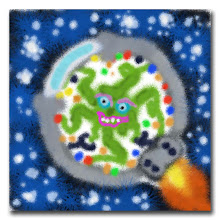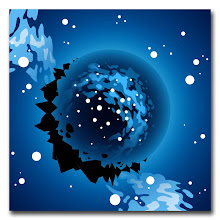
So as not to be accused of being all ass kissy about Kubrick, let me point out a longstanding peeve. The aperture of a camera must be wide open to capture faintly visible objects like background stars. But when a bright object like the day side of the moon, and particularly the sun, is in frame, the aperture is nearly closed and the chance of those very dim and distant background stars registering is nil.
Are you listening, you idiot moon hoax 'I can't see stars in the Apollo footage' ass hats?
For as long as there's been celluloid, there has been an assumption of audience stupidity by film and television studios that wrongly perpetuates the convention that stars are always visible in space. But in space, light is not just relative, it's very relative. It's ironic that this Hollywood falsehood lead to such a monumental misunderstanding of real life.
'I know the real footage of the moon landings I saw was faked, because the faked footage of the moon landings I saw looked so real... obviously.'
In 2001, Kubrick either didn't know he was doing anything wrong, or went along with it for the sake of his little movie.
It's a minor detail and not really worth mentioning. But I went ahead anyway and made these illustrations to show how 2001's opening shot should have looked...
The background stars would be visible behind the eclipse of the moon until the instant the sun breaches the horizon. At that moment the stars would vanish, owing to the new camera setting which requires a smaller aperture so that details on the moon can be seen. Otherwise the moon would be washed out and the sun too bright. Think of exiting a darkened movie theater on a bright sunny afternoon. The eye constantly adjusts to differing degrees of light.
Also, a crescent would advance along the top of the moon as it descends out of frame. Same goes for the Earth...
















